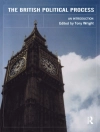The United States Army is looking for ways to defend against missile and mortar attacks. In this book, the National Research Council assesses a plan to create a 100 k W mobile, solid-state, laser weapon that could defend an area several kilometers in diameter.The NRC provides several recommendations: A 100 k W Laser is of limited value, so the program’s goal should be a 400 k W weapon. The Army should proceed with the program in stages, focusing first on a rugged transportable platform for the weapon using existing 25 k W laser technology, then directing resources toward 100k W and 400 k W weapons. The Army should perform a detailed, quantitative study of the effectiveness of a high energy, solid-state laser weapon against future threats. The Army should continue to participate in U.S.-based and international research on high-energy lasers and related equipment. The committee found substantial benefits for the Army’s solid-state laser program from other programs outside the Army. The Army should conduct risk-assessments that investigate the effects that a high energy laser may have on other airborne platforms in the vicinity of the target. The Army should study eye safety for both the operators of the laser and for civilians. The results of these studies should be integrated into the development of the weapon.
Board on Army Science and Technology & Committee on Directed Energy Technology for Countering Indirect Weapons
Review of Directed Energy Technology for Countering Rockets, Artillery, and Mortars (RAM) [PDF ebook]
Abbreviated Version
Review of Directed Energy Technology for Countering Rockets, Artillery, and Mortars (RAM) [PDF ebook]
Abbreviated Version
Mua cuốn sách điện tử này và nhận thêm 1 cuốn MIỄN PHÍ!
Ngôn ngữ Anh ● định dạng PDF ● Trang 42 ● ISBN 9780309111720 ● Nhà xuất bản National Academies Press ● Được phát hành 2008 ● Có thể tải xuống 3 lần ● Tiền tệ EUR ● TÔI 7140948 ● Sao chép bảo vệ Adobe DRM
Yêu cầu trình đọc ebook có khả năng DRM












